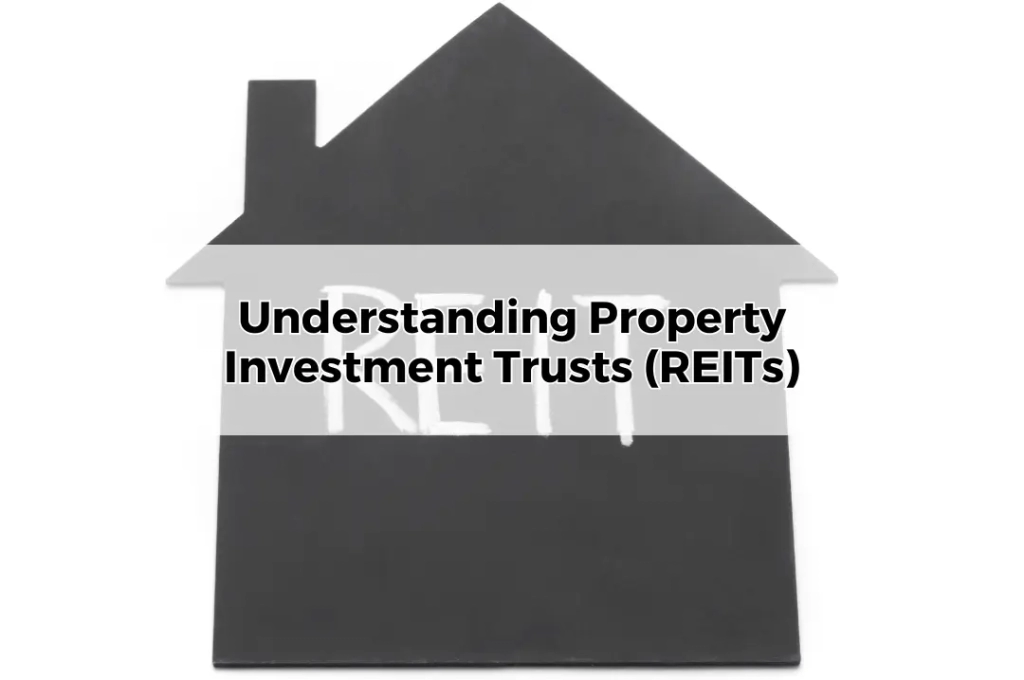Understanding Property Investment Trusts (REITs)
Table of Contents
ToggleProperty Investment Trusts, or REITs, are financial vehicles that allow individuals to invest in large-scale, income-producing real estate. From commercial office spaces and shopping centres to hospitals and warehouses, REITs provide investors with an accessible way to gain exposure to the property market without the complexities of owning and managing physical assets. These trusts pool the funds of many investors to purchase a diversified portfolio of properties, allowing even small investors to benefit from real estate’s long-term growth and income potential.
In Australia, REITs have grown in popularity due to their ability to generate regular income streams through rent collection while providing capital appreciation over time. For investors looking to build wealth without the high entry barriers of direct property ownership, REITs represent a viable alternative. Moreover, as publicly traded instruments, REITs offer liquidity that direct property investments cannot match. Understanding how REITs work and the benefits they provide can be key to creating a balanced and diversified investment strategy.
How REITs Work
At its core, a REIT operates like a mutual fund but focuses solely on real estate. Investors purchase shares in a REIT, which represents fractional ownership in a portfolio of properties. These properties generate income through rent, leasing, and sales, which is then distributed to shareholders in the form of dividends. By law, Australian REITs (also known as A-REITs) must distribute the majority of their earnings—usually 90%—to shareholders, making them an attractive option for income-seeking investors.
REITs are managed by professional teams who handle property acquisition, maintenance, leasing, and financing, allowing investors to benefit from real estate ownership without having to deal with tenant management or repairs. Furthermore, REITs are listed on the Australian Securities Exchange (ASX), which means they can be bought and sold like regular shares, offering liquidity that traditional real estate investments lack. This makes REITs an accessible and flexible option for individuals looking to invest in the property sector.
Types of REITs
REITs come in several varieties, each catering to different investment objectives. Equity REITs are the most common and involve direct ownership of real estate properties. These REITs generate income primarily from rental payments and capital appreciation from property sales. They are suited for investors looking for stable income and potential growth.
Mortgage REITs, on the other hand, do not own real estate directly. Instead, they invest in mortgages or mortgage-backed securities, earning income from the interest on these loans. Mortgage REITs are typically higher risk, as they are more sensitive to interest rate fluctuations.
Hybrid REITs combine both equity and mortgage investments, offering a blend of rental income and interest payments. These REITs provide diversified exposure to both property ownership and financing, making them a suitable option for those seeking a balance of income and risk.
Why REITs Are an Attractive Investment Option
REITs offer several advantages over traditional property investment, making them an appealing choice for many Australian investors. Firstly, REITs provide liquidity, as they are traded on the ASX, allowing investors to buy and sell shares with ease. This contrasts with direct property investments, where selling a property can take months and involve significant transaction costs.
Secondly, REITs require lower capital outlay. Instead of needing hundreds of thousands of dollars to buy a property, investors can start with a much smaller sum to purchase shares in a REIT. This opens up real estate investment to a broader range of individuals.
Additionally, REITs offer diversification. A single REIT might own dozens or even hundreds of properties across various sectors and locations, spreading risk. For investors seeking a reliable income stream with the potential for capital growth, REITs can provide a well-rounded solution that complements other investments like shares or bonds.
Tax Advantages of REITs for Australian Investors
REITs provide several tax advantages for Australian investors. Since REITs are required to distribute the majority of their earnings, shareholders typically receive high dividend payments, which are often tax-effective due to the ability to offset tax credits or deductions against personal income. Investors in REITs also benefit from the tax transparency of the trust structure, meaning tax is not paid at the trust level but rather at the individual investor’s tax rate.
Furthermore, REITs may offer capital gains tax concessions for long-term investors. By holding REIT shares for more than 12 months, investors may qualify for a 50% capital gains tax discount upon selling their shares, enhancing the after-tax returns. These tax benefits can significantly enhance the appeal of REITs as part of a well-considered financial strategy.
REITs vs Direct Property Ownership
While both REITs and direct property ownership allow individuals to participate in the real estate market, they offer different experiences and financial outcomes. Direct property ownership provides investors with control over property management, rental rates, and sale decisions, but it also comes with higher risks, including tenant issues, maintenance costs, and market fluctuations. Additionally, buying property requires a substantial upfront investment and lacks liquidity.
In contrast, REITs provide diversification, liquidity, and professional management, allowing investors to enjoy the benefits of property investment without the headaches of direct ownership. However, REIT investors forgo direct control over the properties in which they invest. Both approaches have their merits, and the choice between them depends on an individual’s risk tolerance, capital availability, and investment horizon.
How to Evaluate a REIT
Investing in REITs requires a clear understanding of the financial metrics that indicate their performance. One critical measure is Net Asset Value (NAV), which reflects the total value of a REIT’s assets minus its liabilities. Comparing the NAV to the REIT’s market price helps determine whether the REIT is overvalued or undervalued.
Another key metric is Funds From Operations (FFO), which adjusts net income by adding back depreciation and amortisation. FFO provides a clearer picture of a REIT’s cash flow and its ability to pay dividends. Investors should also consider a REIT’s yield, which indicates the income generated as a percentage of the current share price. Analysing these metrics helps investors make informed decisions when selecting REITs.
The Role of REITs in a Diversified Portfolio
Diversification is a fundamental principle of sound financial planning, and REITs play an essential role in creating a balanced investment portfolio. REITs offer exposure to the real estate sector without the need for direct ownership, providing investors with income stability and capital growth potential. Additionally, REITs often perform differently from other asset classes, such as equities or bonds, helping to smooth volatility within a portfolio.
By including REITs, investors can achieve better risk-adjusted returns and protect their portfolio against market downturns. For those focused on long-term wealth building, REITs provide both growth and income, making them a valuable addition to a well-diversified strategy.
Risks Associated with REIT Investments
Like all investments, REITs come with risks that need to be carefully considered. One of the primary risks is market volatility, as REITs are traded on the stock exchange and subject to price fluctuations driven by investor sentiment and broader market conditions. Additionally, REITs are sensitive to interest rate movements. Rising interest rates can increase borrowing costs for REITs and reduce their ability to distribute dividends, leading to lower returns for investors.
Sector-specific risks also come into play. For example, a REIT focused on retail properties may face challenges if consumer spending declines or if there’s a shift towards online shopping. Understanding these risks and selecting diversified REITs with strong management teams is crucial for minimising potential downsides.
REITs and Superannuation
REITs can be a powerful component of a superannuation strategy, providing income and growth opportunities that align with long-term retirement planning goals. Super funds often include REITs in their investment mix, offering members exposure to real estate without the complexities of direct property investment. The tax-advantaged structure of superannuation further enhances the appeal of REITs, as both earnings and withdrawals (in retirement) are taxed at concessional rates.
For those managing their own Self-Managed Super Funds (SMSFs), REITs provide a simple and effective way to diversify into property without the capital-intensive requirements of buying property directly. This allows investors to balance risk while enjoying the benefits of real estate within their retirement savings.
Global vs Domestic REITs
Australian investors have access to both domestic and global REITs, each offering unique opportunities and risks. Australian REITs (A-REITs) are known for their transparency and steady income, often focusing on commercial, industrial, and retail properties. However, international REITs can offer exposure to different markets, including high-growth regions and specialised sectors such as healthcare or technology-related real estate.
Investing in global REITs allows for geographic diversification, reducing the risk associated with a single country’s property market. However, investors should be mindful of currency fluctuations, regulatory differences, and geopolitical risks. A well-balanced portfolio might include both Australian and global REITs to capture a broader range of opportunities.
Conclusion
Given the complexities of the REIT market, working with a professional financial adviser can provide valuable insights and tailored strategies. A Toowoomba Financial Adviser can help assess your financial goals, risk tolerance, and investment preferences to recommend REITs that align with your broader financial plan. Whether you’re looking to generate income, diversify your portfolio, or build long-term wealth, a financial adviser can guide you through the process and ensure that your REIT investments are optimised for success.
At Wealth Factory, we specialise in helping clients navigate the investment landscape, including REITs, to achieve their financial goals. With professional guidance, you can confidently invest in REITs and secure your financial future.









